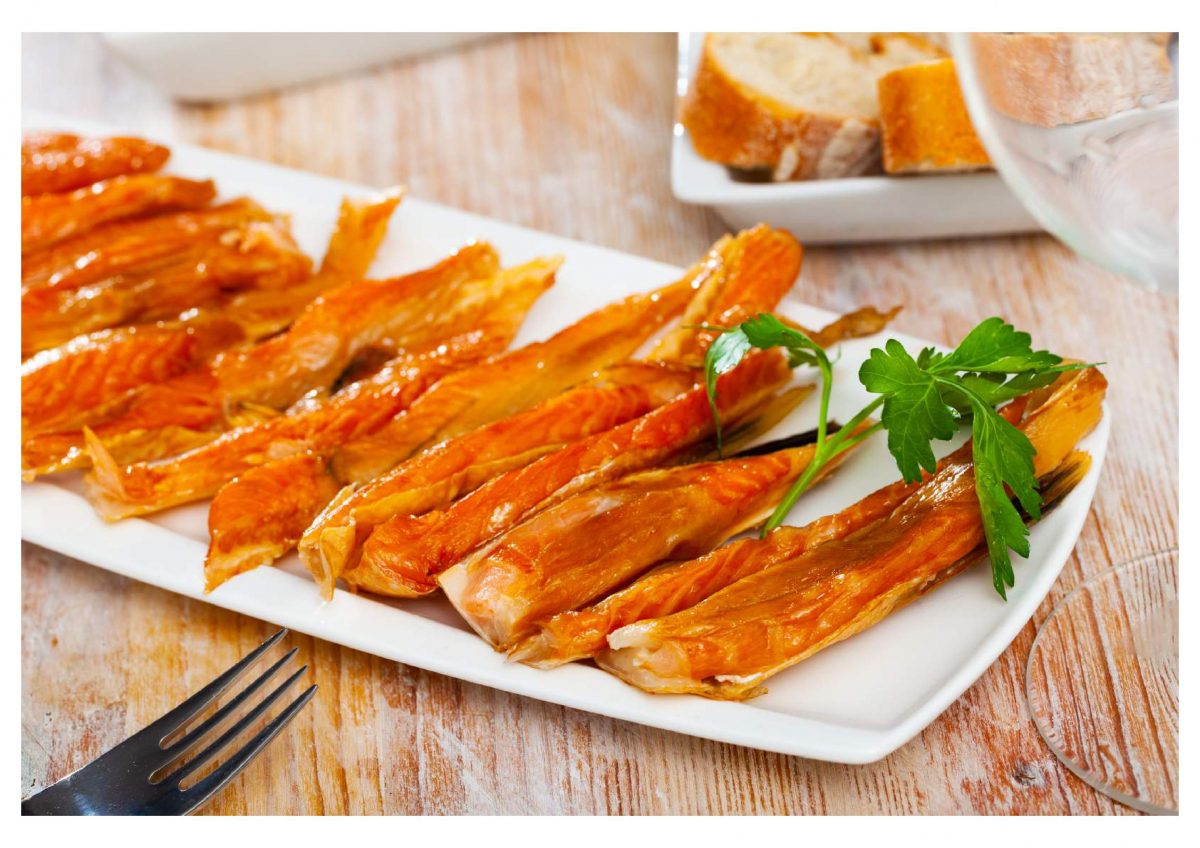If you walk into your local fish market, you’ll likely find a variety of seafood in the form of carefully arranged fish fillets. However, you usually won’t see all the offcuts, even delicacies, that are typically thrown away. In fact, depending on the species, roughly 50% or less of a whole fish is turned into a fillet. Seafish UK estimates that of 851,984 tons of fishery products, a mere 43% ends up as product for human consumption . While there are other outlets for the waste generated from seafood, like fishmeal and petfoods, it’s important that consumers recognize the impacts of our food waste, especially seafood waste, going into the feastful holiday season. In the United States, nearly half our seafood supply goes to waste. As an overexploited resource in the wild and energy-intensive when farmed, we should all do our part to respect our fish, our fisheries and our food resources by utilizing the most we can from every fish.
Fortunately, there are culinary applications that utilize the whole fish. With a little education and know how, we consumers can create a market for these unknown gems, while also doing our part to reduce food-waste this holiday season. As someone who has worked behind one of those seafood counters, I’m here to let you in on some fishmonger secrets so you too can utilize the whole fish and throw less in the bin.
The Offcuts
When it comes to applications for seafood’s culinary treasures, the possibilities are endless! I’ll provide you with a high-level introduction into the philosophy of nose to tail cooking. Here are some offcuts that can be better utilized in your next holiday dish.
- The Collar. A cut from along a fish’s clavicle and behind its gills, the collar is a delicacy in some cultures, yet is overlooked in the United States. Collars are essentially a bony triangle containing some of the most fatty, tender meat of the whole fish. Isn’t it ironic that you might find these on the menu of a Michelin starred restaurant, yet they are also being thrown away at your local fish market? Check and see if your local fishmonger has any in the back. You might even be able to get them for a mere few dollars per pound.
- The belly cut is the richest, fattiest cut of the fish. While tuna belly yields a sky-high price, belly cuts from other species are typically discarded. Salmon bellies, being the main discard, are rich with healthy oils and full of flavor. At many fish markets, this cut is a staff favorite.
- Fish bones. After you’ve utilized the collars (and other offcuts of course!), fish bones can be reduced to a delicious stock that can be used as a soup base, for a delicious risotto or for whatever else you may dream up. Whitefish bones are best and again, check with your local fishmonger. He or she just might give them to you for free.
- For more adventurous cooks, utilizing the innards or “offal” of fish is a great way to maximize yield. In French cuisine, the liver and innards are commonly used for sauces, mousse and pate. Monkfish liver, among others, can even be served in foie gras applications. Furthermore, we’ve all heard of caviar, but the roe of many species can also be cured and turned into “bottarga” and grated or shaved over pastas or salads.
My Advice for Getting the Most for Your Meal
Utilizing under-loved parts of fish isn’t the only way to maximize yield. Fish bones can be scraped clean and this meat can be used for seafood burgers, soups, tartar, and sushi applications. Another option is to cook the fish whole, creating a beautiful whole fish dish and getting the most off the fish. Finally, it is important to utilize trustworthy fishmongers who source seafood whole. Not only does this create a fresher product, but it means you’ll have access to all of the delicacies typically not sold. Be sure to also do some research on sustainable seafood options and important considerations when buying seafood.
The next time you’re planning to cook up a seafood dish, why not stray away from the traditional fillet towards a more sustainable, under-loved and delicious offcut?
